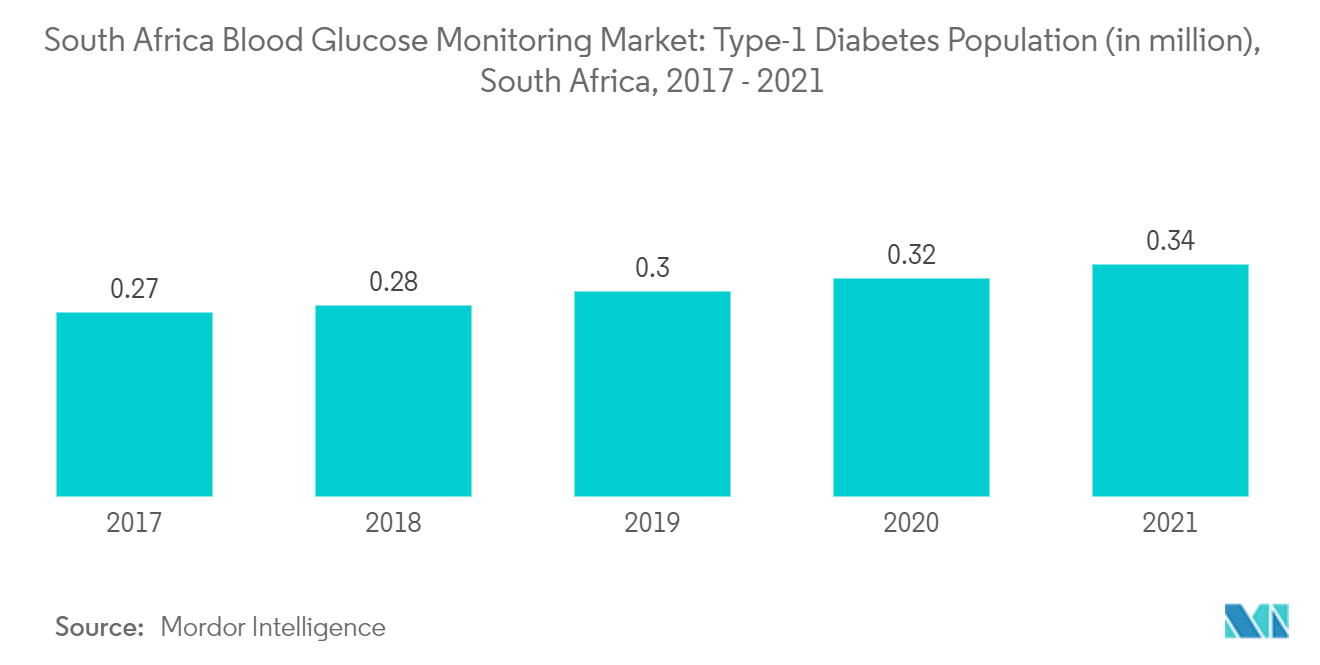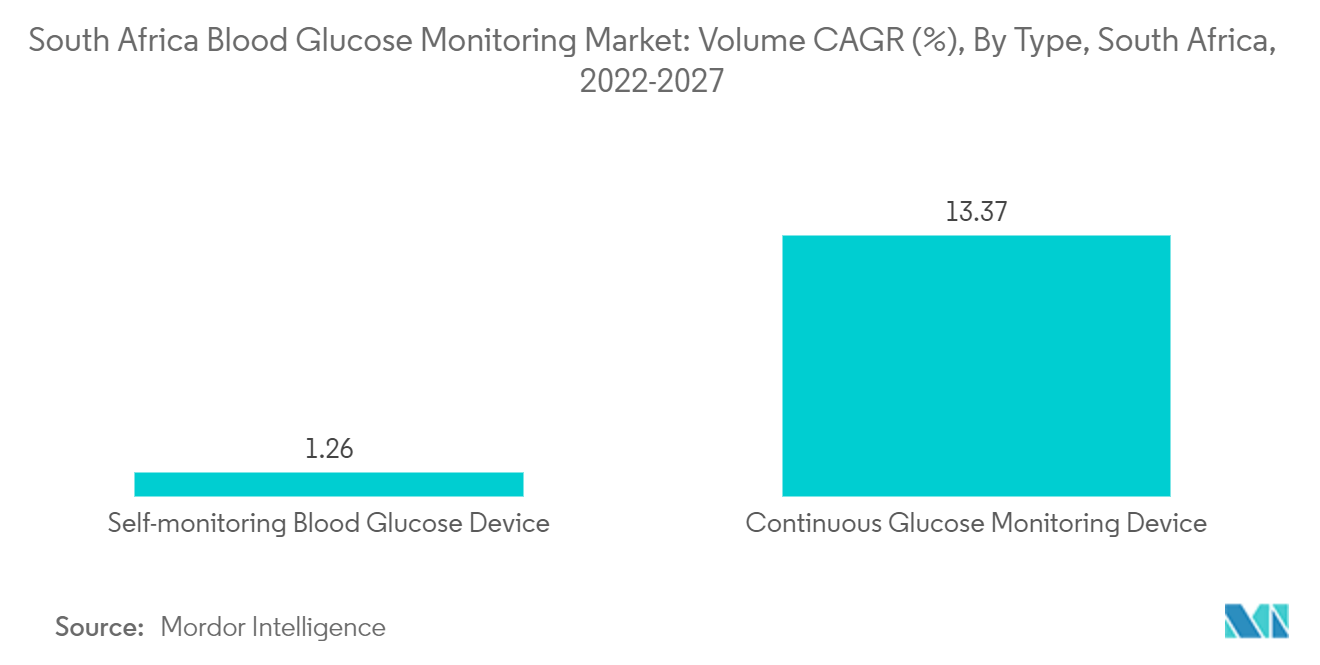Market Trends of South Africa Blood Glucose Monitoring Industry
Rising diabetes prevalence
In South Africa, Diabetes Population is expected to increase with a CAGR greater than 2.5% over the forecast period.
According to IDF Diabetes Atlas 2021, one in nine adults in South Africa is living with diabetes. The diabetes prevalence in South Africa has reached 11.3%, the highest in Africa. The cost of diabetes-related health expenditure has risen to 1,700 USD per person which is estimated to be around 7.2 billion USD. In South Africa, diabetes is the fastest-growing disease, and the country has a high number of diabetic patients. The prevalence of diabetes is growing among all ages in South Africa, which can be attributed to the increasingly obese population, along with an unhealthy diet and a sedentary lifestyle.
One of the most effective ways to decrease the prevalence of diabetes in South Africa is to educate citizens and encourage healthy decision-making. South Africa is currently working towards this goal. One recent preventative measure taken by the South African government is the implementation of a sugar tax. By charging more for sugary drinks and foods, the government is fighting obesity and helping citizens make more conscious decisions. South Africa launched a Diabetes Prevention Programme (DPP). The DPP aims to integrate intervention treatments for at-risk individuals.
Diabetes poses an emerging healthcare burden across the country and is one of the leading causes of premature death, morbidity, and loss of economic growth. Technological development is gaining momentum in the glucose monitoring market which is likely to boost the adoption of these products in the market.

The Continuous Glucose Monitoring Segment is Expected to Witness Highest Growth Rate Over the Forecast Period
The Continuous Glucose Monitoring Segment recorded more than USD 13 million in revenue in the current year, which is expected to further increase with a CAGR of more than 13.5% during the forecast period.
Continuous glucose monitoring is a wearable tool that makes it easier for people with diabetes to track their blood sugar levels over time and measures their glucose levels 24 hours a day while wearing the device. A small sensor is inserted into the abdomen or arm with a cannula penetrating the top layer of skin. An adhesive patch holds the sensor in place, allowing it to take glucose readings throughout the day and night. Generally, the sensor must be replaced every 7 to 14 days. A small reusable transmitter connected to the sensor allows the system to send real-time readings wirelessly to a monitor device or a smartphone app that displays blood glucose data.
A systematic approach to the organization of care is essential for diabetes including well-trained and dedicated personnel, calibrated and functioning equipment, management and referral protocols, regular and sustainable supply of medication, syringes, and consumables, a register of all patients, and annual review charts. Various protocols such as SA Diabetes Declaration Implementation Strategy, Long-term care model Implementation Plan, National Guideline: Non-Communicable Diseases: A Strategic Vision, Chronic Diseases Indicators, and Records with these updated guidelines facilitate improved quality of diabetes care.
CGMs-insulin pump combinations are used to automatically adjust insulin delivery based on a patient’s glucose levels. Medtronic has a few combination systems on the market, including the MiniMed 630G system, the 670G system, and the Paradigm Revel. The MiniMed 630G system and Paradigm Revel are both approved for use by adults and children from the age of 16 years, and the MiniMed 670G system is approved for use by adults and children aged 14 years and older with T1D. The advent of such new technologies is likely to drive segment growth during the forecast period.


